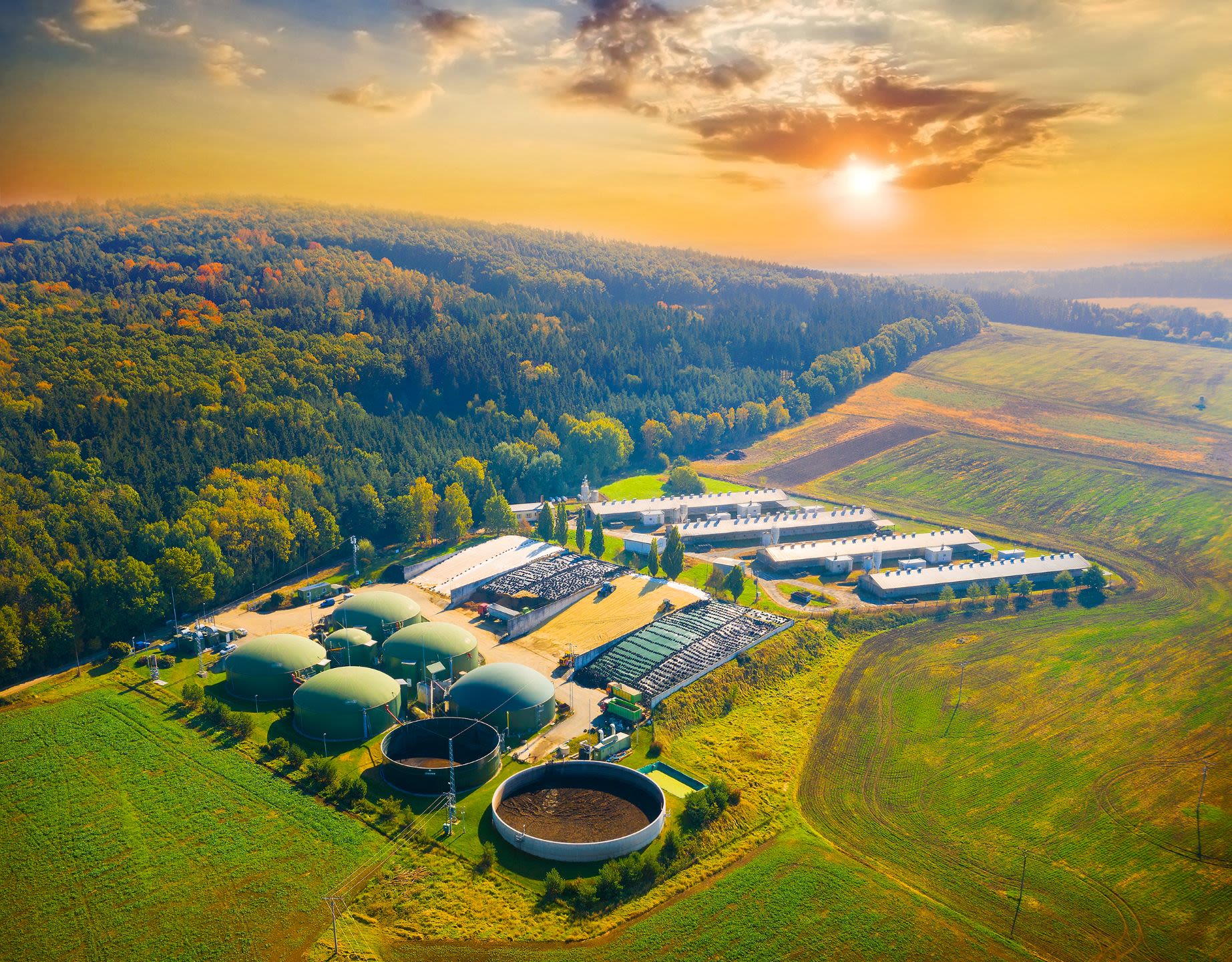Glossary
A
Accreditation Body: An organization responsible for accrediting and overseeing Certification Bodies that assess and verify the sustainability performance of SAF producers, feedstock suppliers, and other entities within the SAF supply chain. Accreditation bodies play a crucial role in ensuring the integrity, credibility, and consistency of SAF sustainability certification by evaluating the competence, impartiality, and compliance of Certification Bodies with recognized accreditation standards and requirements. Accreditation bodies are established in many economies with the primary purpose of ensuring that Certification Bodies are subject to oversight by an authoritative body (International Laboratory Accreditation Cooperation 2023).
B
Book and Claim: A chain of custody model in which the administrative record flow is not necessarily connected to the physical flow of material or product throughout the supply chain. The model allows organizations to claim and trade the environmental benefits associated with the production and use of SAF while the physical transfer and consumption of the fuel can happen with another entity. This is facilitated by the issuance, trading, and retirement of certificates or credits representing the environmental attributes of the SAF.Certified Entity: An organization, facility, or entity that has undergone assessment, verification, and certification by an accredited certification body to demonstrate compliance with established sustainability criteria and standards for the production, processing, or distribution of SAF.
C
Certification Body: An independent, third-party organization that handles the certification process, including the assessment of the individual economic operator’s compliance with the requirements of the certification schemes. A certification body is authorized by the certification scheme’s owners to issue certificates of compliance to economic operators, provided the operators comply with the requirements defined under the certification scheme.
Certification Scheme: A program or initiative established to assess, verify, and certify the sustainability performance of products, processes, or organizations against specific sustainability criteria and standards.
Certification Scope: The scope of certification as defined by the product(s) for which the certification is granted, the sites and facilities covered by the certification; the applicable certification scheme; and the standards and other normative document(s), including their date of publication, that the product(s) comply with.
Chain of Custody: The documented process of tracking the flow of feedstocks, fuels, and associated sustainability attributes throughout the supply chain. The chain of custody ensures the traceability, transparency, and integrity of SAF from its origin through production, blending, and distribution to end-users. It involves recording and verifying the movement and transformation of materials to maintain accountability and ensure compliance with sustainability standards and certification requirements. Currently, the most common chain of custody model used for SAF is mass balance. Book and claim chain of custody is also emerging.
CORSIA: The Carbon Offsetting and Reduction Scheme for International Aviation is a global market-based measure developed by the International Civil Aviation Organization (ICAO), to address greenhouse gas emissions from international aviation. It aims to achieve carbon-neutral growth in international aviation by requiring airlines to offset any increase in carbon emissions above a baseline level.
CORSIA Eligible Fuel (CEF): Fuel including SAF that meets the specific sustainability criteria and standards established by the International Civil Aviation Organization (ICAO) for use in the CORSIA scheme.
D
Default Value: A figure derived from a typical value by the application of pre-determined factors and that may, under certain circumstances be used in place of an actual (calculated) value.
E
Economic Operator: Any entity involved in the production, processing, distribution, trading, or use of SAF within the supply chain.
EU ETS: A greenhouse gas emissions trading system (ETS) is a market-based mechanism designed to reduce greenhouse gas (GHG) emissions by establishing a cap on overall emissions and allowing regulated entities to buy and sell emissions allowances or credits. The European Union ETS is a key policy instrument of the European Union to combat climate change and aviation is one of the sectors included.
EU RED: The European Union Renewable Energy Directive is the legal framework for promoting the use of energy from renewable sources and increasing the share of renewable energy in the EU's overall energy consumption. The Directive sets binding targets for EU Member States to achieve a certain proportion of renewable energy in their final energy consumption. Under EU RED, biofuels, including those used for aviation, are subject to sustainability criteria to ensure that they contribute to greenhouse gas emission reductions and meet certain environmental and social standards.
G
Greenhouse Gas (GHG) emissions: Gases emitted into the atmosphere, either naturally or as a result of human activities. These gases trap heat in the Earth's atmosphere, leading to the greenhouse effect, which contributes to global warming and climate change. For air transport, GHG emissions refer primarily to CO2 emissions arising from the production, distribution and combustion of aviation fuel.
GHG intensity: In the context of SAF, it is a key metric for assessing the environmental performance and sustainability of SAF. It allows to evaluate the extent to which SAF reduces greenhouse gas emissions relative to conventional jet fuel. The calculation of GHG intensity for SAF involves determining the total lifecycle greenhouse gas emissions associated with SAF production, including direct emissions from feedstock cultivation, processing, and conversion into fuel, as well as indirect emissions from energy consumption, transportation, and other ancillary processes. These emissions are then divided by the volume or energy content of SAF produced or consumed to obtain the GHG intensity.
GHG Protocol: An international standard for corporate accounting and reporting of greenhouse gas emissions, which is an initiative managed by World Resources Institute and World Business Council for Sustainable Development. Under this standard, three “scopes” are defined for the purposes of greenhouse gas (GHG) emission accounting and reporting:
Scope 1: Direct GHG emissions, including from the combustion of fuel.
Scope 2: Electricity indirect GHG emissions.
Scope 3: Other indirect GHG emissions, including emissions associated with business travel.
Group Certification: A certification model where multiple entities within a defined group or organization are certified collectively under a single certification process. This approach allows smaller entities, such as SAF producers or feedstock suppliers, to benefit from certification by leveraging shared resources, expertise, and compliance efforts within the group. The group seeking certification is defined based on common characteristics, such as ownership structure, organizational affiliation, geographic location, or operational scope. The group may include SAF producers, feedstock suppliers, blenders, distributors, or other entities involved in the SAF supply chain.
I
Indirect Land Use Change (ILUC): A phenomenon where the production of biofuels, including Sustainable Aviation Fuel (SAF), indirectly leads to changes in land use patterns, typically resulting in increased deforestation, land conversion, or displacement of agricultural activities.
L
Land Use: All the arrangements, activities, and inputs undertaken in a certain land cover type (a set of human actions) or the social and economic purposes for which land is managed (e.g., grazing, timber extraction, conservation) (GHG Protocol, Oct 2006).
M
Mass balance: A chain of custody model that allows a particular consignment of renewable fuels, SAF in this context, to be blended with other consignments. At the point of entry, the consignment is treated the same as other consignments in the system if the total volume in the system is maintained and the ownership of participating entities are recorded. The mass balance approach allows for flexibility in blending ratios, enabling SAF producers to mix different feedstocks and optimize production efficiency.
R
ReFuelEU: A legislative proposal introduced by the European Commission as part of the Fit for 55 package that aims to align the European Union's climate and energy policies with its target of reducing net greenhouse gas emissions by at least 55% by 2030. ReFuelEU is focused specifically on the aviation sector and aims to promote the use of SAF to reduce the carbon intensity of aviation and mitigate the sector's environmental impact. ReFuelEU introduces a mandatory blending obligation requiring aviation fuel suppliers to blend a minimum share of SAF into the jet fuel they provide to airlines operating in the European Union.
S
Surveillance Audit: A limited evaluation, where a participating Economic Operator in a Certification Scheme is evaluated against a limited number of standards and procedures. This audit is part of the ongoing monitoring and compliance activities to ensure that certified entities continue to meet the requirements of the certification standards over time.
Sustainable Aviation Fuel (SAF): SAF refers to the synthetic blending component produced from sustainable feedstock according to the requirements spelt out in the Annexes of ASTM Standard Specification D7566 for Aviation Turbine Fuels Containing Synthesized Hydrocarbons latest issue. The synthetic blending component needs to be blended with conventional aviation fuel and the subsequent SAF blend shall meet the same specifications for conventional aviation fuel. For SAF produced using the co-processing pathway, SAF refers to the proportion of the fuel that contains sustainable material.
Sustainability Certification Schemes (SCS): Under the ICAO CORSIA framework, certification schemes are officially called SCS. SCS is often interchangeably used to refer to the organization that offers the certification scheme.
Sustainability criteria: A set of requirements as to the sustainable quality of the SAF and its sustainable production and supply, which must be fulfilled for the SAF to be eligible for a certain certification scheme, financial incentive program, carbon reduction program, or legislative requirements such as those imposed by regulatory authorities like the European Union and ICAO.
U
Union Database (UDB): A central repository or database for biofuels and bioliquids used for tracking and monitoring compliance with the sustainability criteria outlined in the Renewable Energy Directive and the Fuel Quality Directive (FQD) within the European Union. It is a key component of the EU's renewable energy regulatory framework, providing transparency, accountability, and oversight of renewable energy production processes and sustainability performance. The Union database is being upgraded to be able to track and monitor compliance with SAF mandates on fuel suppliers under ReFuelEU.


